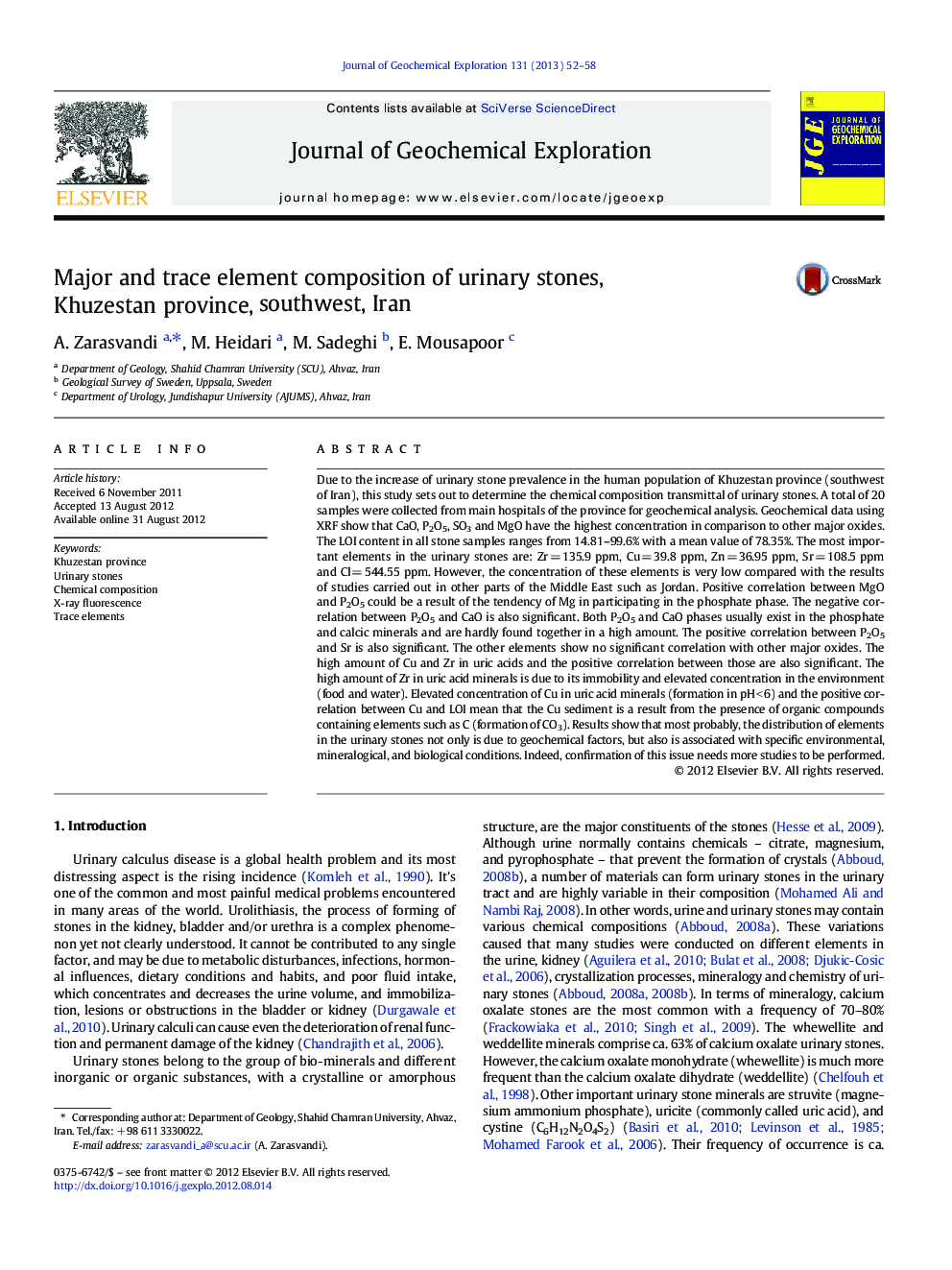| کد مقاله | کد نشریه | سال انتشار | مقاله انگلیسی | نسخه تمام متن |
|---|---|---|---|---|
| 4457463 | 1620926 | 2013 | 7 صفحه PDF | دانلود رایگان |

Due to the increase of urinary stone prevalence in the human population of Khuzestan province (southwest of Iran), this study sets out to determine the chemical composition transmittal of urinary stones. A total of 20 samples were collected from main hospitals of the province for geochemical analysis. Geochemical data using XRF show that CaO, P2O5, SO3 and MgO have the highest concentration in comparison to other major oxides. The LOI content in all stone samples ranges from 14.81–99.6% with a mean value of 78.35%. The most important elements in the urinary stones are: Zr = 135.9 ppm, Cu = 39.8 ppm, Zn = 36.95 ppm, Sr = 108.5 ppm and Cl = 544.55 ppm. However, the concentration of these elements is very low compared with the results of studies carried out in other parts of the Middle East such as Jordan. Positive correlation between MgO and P2O5 could be a result of the tendency of Mg in participating in the phosphate phase. The negative correlation between P2O5 and CaO is also significant. Both P2O5 and CaO phases usually exist in the phosphate and calcic minerals and are hardly found together in a high amount. The positive correlation between P2O5 and Sr is also significant. The other elements show no significant correlation with other major oxides. The high amount of Cu and Zr in uric acids and the positive correlation between those are also significant. The high amount of Zr in uric acid minerals is due to its immobility and elevated concentration in the environment (food and water). Elevated concentration of Cu in uric acid minerals (formation in pH < 6) and the positive correlation between Cu and LOI mean that the Cu sediment is a result from the presence of organic compounds containing elements such as C (formation of CO3). Results show that most probably, the distribution of elements in the urinary stones not only is due to geochemical factors, but also is associated with specific environmental, mineralogical, and biological conditions. Indeed, confirmation of this issue needs more studies to be performed.
► We determined distribution of urinary stones in southwest Iran.
► Environmental factor on the formation of the urinary stones was presented.
► Chemical composition of different types of stones was determined.
► Some elements have a close relationship with concentration of urinary stones.
Journal: Journal of Geochemical Exploration - Volume 131, August 2013, Pages 52–58